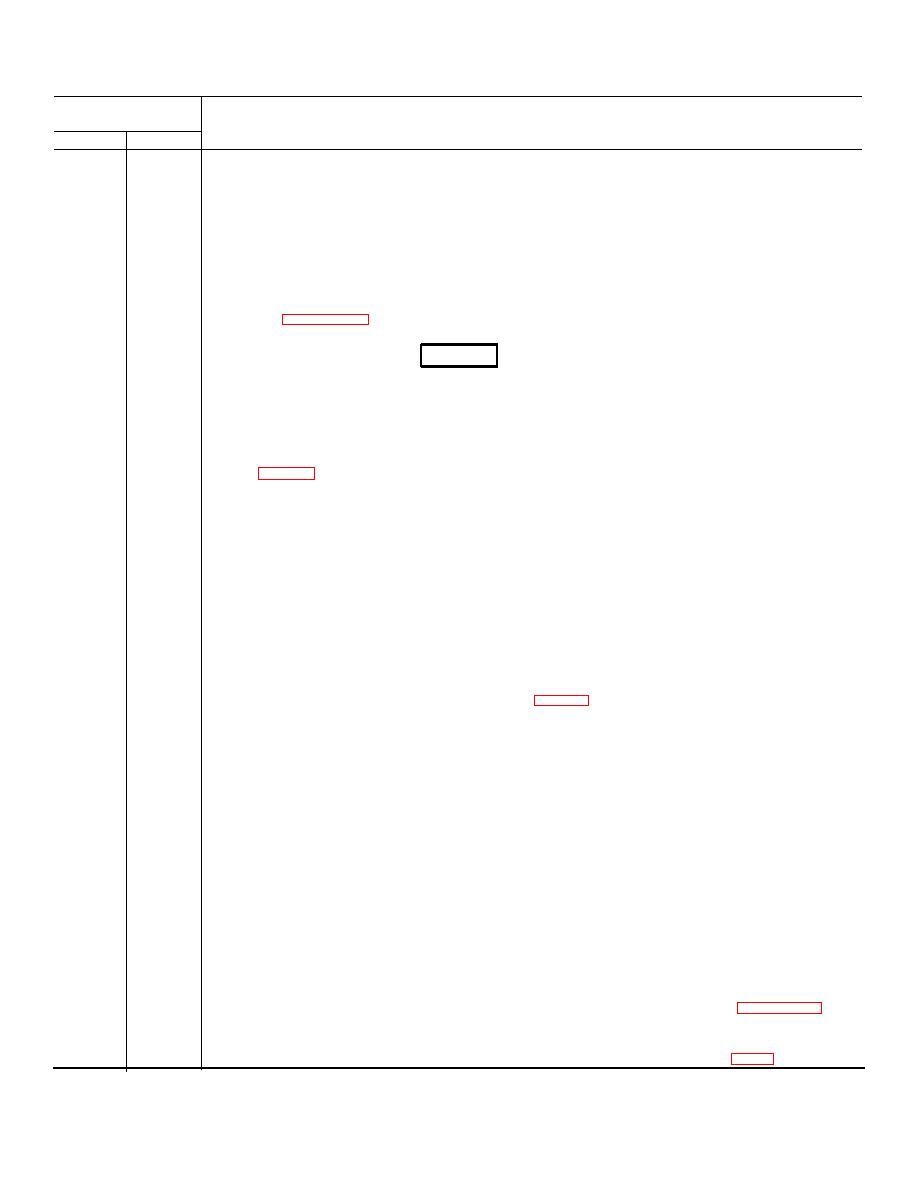 |
|||
|
|
|||
|
Page Title:
Table 3-1. Operator/Crew Preventive Maintenance Checks and Services |
|
||
| ||||||||||
|
|
 Table 3-1. Operator/Crew Preventive Maintenance Checks and Services
D--Daily
W--Weekly
Interval and
ITEM TO BE INSPECTED
Sequence No.
PROCEDURE
D
W
1
ENGINE OIL
Before operation, check level of oil in the crankcase. If the oil level is below the specified mark on the dipstick, remove the oil
filler cap and add oil to bring the level to the specified mark.
NOTE
If it takes more than two quarts of oil to bring the level up to specifications, report this condition
immediately to organizational maintenance.
2
AIR CLEANER
Check restriction indicator mounted next to the control panel. If it indicates that the air cleaner must be serviced, proceed as
described in paragraph 3-10. Remove the precleaner and clean out any accumulated dirt or debris
3
FUEL LEVEL
WARNING
Do not fill the fuel tank while the engine is running. Flammable vapors are released while the
tank is being filled, and a spark from the engine could ignite them.
Check fuel level on gage mounted on the fuel tank. Fill if necessary.
4
BATTERY
If the battery electrolyte level is low, fill to the proper level with distilled water or a good grade drinking water (excluding mineral
water) (para 3-12).
5
EXHAUST SYSTEM
Check muffler, pipes and manifold for damage and leaks. Check weather cap for proper operation.
Report damage to organizational maintenance.
6
GENERAL
W alk around the pump unit and visually inspect for loose or missing bolts, screws, hoses, fittings, or other parts. Be sure the
wheels are properly blocked. Check tires for 40-psi inflation and fill them if necessary.
7
SUCTION AND DISCHARGE LINES
Check that all line connections are tight and that lines are free from severe abrasions, cracks, flatted areas, and obstructions.
8
UNUSUAL OPERATIONS
During operation, check for leaking, low pumping rate, excessive noise or vibration, overheating, or other abnormal operation.
9
FUEL STRAINER
Check for dirt or water in the fuel bowl. Service if necessary (para 3-11).
10
COOLING SYSTEM
With the engine cold, open the radiator access cover on top the engine housing, and remove the radiator cap. If the coolant
level is more than 11/2 inches below the filler neck, refer the unit to organizational maintenance for service.
11
FAN BELT
Inspect the fan belt for glazing, cracks, or other wear. The belt must deflect 3/4 to 1 inch with thumb pressure at midpoint of
the longest belt span. Report a loose or worn belt to organizational maintenance.
12
HOSES AND PIPING
Inspect fuel lines, fuel pump, coolant hoses, water pump, and pump gage lines for leakage. Tighten fuel line fittings if
necessary. Report all other trouble to organizational maintenance.
13
PUMP
Inspect the pump suction and discharge assemblies for loose mounting or damage. Check that the pump is firmly mounted
to the chassis. The pump must be aligned carefully with the engine. Report an insecurely mounted pump to organizational
maintenance for alignment and tightening.
14
CHASSIS
Inspect engine shrouds and chassis frame for cracks or damage. Refer the unit to organizational maintenance for necessary
repairs.
15
TIRES
Fill tires to 40-psi inflation and inspect them for cuts, bruises, or blisters. Tire service is described in paragraph 3-13.
16
TACHOMETER DRIVE
Turn grease cup on tachometer drive clockwise two full turns to provide Tease to the gear teeth. When the grease cup is
turned down all the way, refill it with automotive grease and reinstall it. Refer to LO 5-4320-234-12 (fig. 3-1).
Change 1
3-7
|
|
Privacy Statement - Press Release - Copyright Information. - Contact Us |